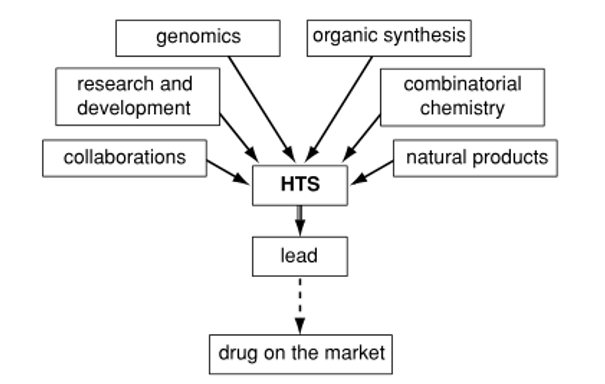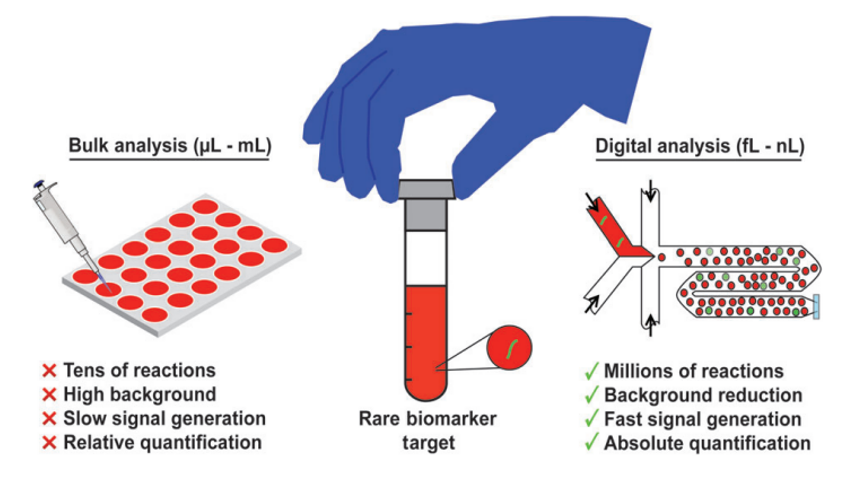The primary task of drug development is to screen the targets according to the specificity of human organs. The selection of drug targets through advanced technology can provide precise theoretical support for drug research and development. High-throughput screening (HTS) is the key interface to identify new lead compounds in early stage. A large amount of information can be obtained through HTS, which has been utilized as a method for the discovery of novel targets in various human diseases.
 Figure 1. The key interface linking aspects of biological and chemical diversity in HTS. (Michael, et al. 2009)
Figure 1. The key interface linking aspects of biological and chemical diversity in HTS. (Michael, et al. 2009)
The Characteristics of HTS in Drug Discovery
- The validation of the HTS approach with the discovery of hypericin has led to a paradigm shift together with efforts to shorten the drug-to-market time. The time required to complete a screening campaign at a given target has continually decreased while the number of samples that can be investigated has greatly increased.
- One of the basic prerequisites for HTS is the availability of compound libraries, typically comprising several hundred thousand compounds. Access to libraries with a high degree of diversity, and where the compounds are present in sufficient quantity and quality to allow initial hit identification, is critical to the success of HTS. A number of companies have developed software aids to help analyze the multi-dimensional characteristics of a library.
- For effective detection of a biomarker of interest, conventional bulk analysis is restricted to a few replicate reactions, wherein signal can be drowned out by high concentration of sample background, limiting overall sensitivity and speed. In contrast, using HTS as the digitization of sample into femtoliter to facilitate background reduction and subsequently greater sensitivity and speed.
- Natural products and natural product-derived compounds have been the major sources of human drugs, and play an important role in modern drug development. Natural products from reptiles, sea organisms, microorganisms, and plants represent a rich source for chemically diverse molecular entities, which could be used in HTS.
 Figure 2. HTS offers a potential solution for detecting rare biomarkers. (Aniruddha M. et al. 2018)
Figure 2. HTS offers a potential solution for detecting rare biomarkers. (Aniruddha M. et al. 2018)
The HTS advances augur well in regard to the integration of newer technologies that will further accelerate the drug discovery process, although there are still many problems, such as the relationship between the screening results of models in vitro and the overall pharmacological effects. With the advancement of medicine, HTS technology will certainly open up a broader space for the development of novel drugs.
References
- Entzeroth M. et al.; Overview of High-Throughput Screening. Current Protocols in Pharmacology, 2009, 44: 1.
- Aniruddha M. et al.; Droplet microfluidics for high-sensitivity and high-throughput detection and screening of disease biomarkers. WIREs Nanomed Nanobiotechnol, 2018, e1522.
- Allen M. et al.; High throughput fluorescence polarization: A homogeneous alternative to radioligand binding for cell surface receptors. Biomol. Screen, 1999, 5: 63-70.
- Bailey S. N. et al.; Applications of transfected cell microarrays in high-throughput drug discovery. Drug Discov. Today, 2002, 7: S113-S118.